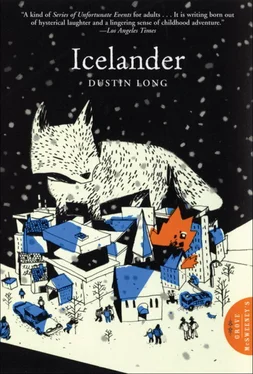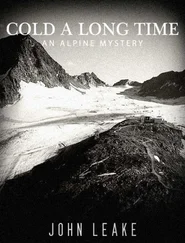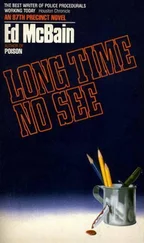And as I explained it, I suddenly realized that it didn’t matter to me that he had gotten away. He’d said he’d done all of this for me; to give me “meaning.” By playing the detective to his villain, I supposed. But I would not be defined in relation to him. I wanted to whisper that last part to somebody, too. But then I immediately felt as if I were going to be sick, and I stumbled off of the porch, into the snowy yard.
Valison, doubtless, felt an affinity with his anonymous villain to the extent that any writer identifies with his most strongly rendered characters—it would be pointless to deny this—but to infer the two men’s mutual identity from this affinity and then to present it as fact is insulting not only to the memory of Valison but to the intelligence of the Reader. One may as well assert that Milton was the Devil or that Conan Doyle was Moriarty. So it is my sincere hope that the intelligent Reader will therefore take this assertion as nothing more than the misguided fiction that it is. He would have told me. One of him. It simply cannot be true. It cannot. It can’t.
And I was dizzy.
“I do not want this,” I said, hunched over and holding my head in my bloody hands.
“You don’t want what?” Connie asked, coming quickly up beside me and wrapping her arm around my back.
I stood upright and took a deep breath, considering all the possible answers to that question. “I don’t know,” I mumbled.
But it struck me as somehow profound. This series of negations. Things that I did not want… To go back to teaching next semester and deal with people like Boris Baxter. [52] At least one of her wishes came true.
To be the heroine of mystery novels as my mother was. To experience the intensity of life only through contrast… I did not want Prescott, Hubert, or Nathan. [53] I should have guessed that she was a lesbian.
On a more immediate level, I did not particularly want to go to the hospital; I didn’t want to go the night without Garm by my side.
Standing there with Connie, waiting for the ambulance that would not restore my finger, I felt the air vivid and crisp around me. The sky was clear and starry with a bright full moon; the snow was all fallen, and it was dry beneath my feet.
The low angle of the porch light behind me threw my shadow out across it, reproducing my shape in such epic length and detail that I could almost make out my individual features. As I squinted at it, there was nothing missing at all. I broke away from Connie then and jogged out into it—I stooped to stick my bare hand into it—and the cold of it stole my breath and clarified my thoughts with adrenaline. The snow and shadow.
And even when the ambulance rounded the corner, and I straightened back up and raised my frozen hand to signal them—“It’s me; here I am”—my shadow was there, too, waving back at me like someone I knew.
My shadow was waving at me furiously, as if it were someone whom I hadn’t seen in a very long time.
Concerning the Origin and Authorship of Icelander
Magnus Valison left behind a forest’s-worth of papers, and in his will he appointed me—John Treeburg—with the bewildering task of sorting through it all. And yet it wasn’t until late 2004—over three years after his death—that these papers were finally planted upon my desk. This unfortunate delay was mostly due to a mix-up involving a spurious copy of the Master’s will that listed Jon Ymirson as literary executor rather than myself. Yet once I proved in court that this document was a forgery, despite “Our Heroine’s” feeble attempts to discredit me, I immediately retrieved the precious papers from Ymirson’s guilty hands and began to dig my way through them.
At first I was taken aback by the mountains of papers that piled up on my floor, though, and it was some time before I developed an appropriate system of organization for them, much less discovered any of the literary gems buried within. As happenstance would have it, of course, the typescript of the novel in question was located in the nethermost stratum of one of those mountains, and consequently it wasn’t until nearly a month later—in January of 2005—that I unearthed it. The pile under which it was buried was a particularly large one that consisted mostly of jotted phone numbers, lists of Things To Do, enigmatic phrases scrawled on the backs of grocery receipts (what did Valison want with dog food when he had no dog?), and unfinished missives to friends. As soon as I recognized that this was a novelization of recent events, though, I could scarcely contain the hopes that rose up within me.
“Could this be Valison’s rumored final work?” I wondered.
The answer that I have since arrived at is an unequivocal “no.” Despite certain superficial similarities of style and content, I am convinced that this text can be nothing more than the work of a talented pretender—a lode of iron pyrite found among veins of gold—and the typescript must have been introduced into the collection of Valison’s papers at some point after they were initially entrusted to Jon Ymirson. Ymirson himself proved no help with regard to this matter, as he refused so much as to speak with me. But I am sure that his condition has rendered him a moron by now, regardless. Without anything more in the way of hard evidence, though, the typescript’s origin must nominally remain obscure.
Now, there are undoubtedly those who would still contend that this novel is indeed the work of Magnus Valison, seemingly without any more basis than the fact that it would appear to be the simplest supposition. Yet such theories fail to account for the multiple references to belts within the text itself, which clearly indicate an intimate familiarity with the circumstances of Valison’s death and perhaps even point toward the identity of his murderer. I am, of course, the first to admit the infinitely supreme nature of the Master’s talent, but even I do not suppose that he could have written a novel containing the details of his own death.
Without question, the Author’s main purpose seems to be to twist events—to confuse me—and I believe that a close reading of the text will bear me out on this assertion. Why else would this Author have ended the text in this place, when all of the best bits were yet to come?
Surt’s anger, for instance, when he discovered that the Hamlet (or, more precisely, Amleth , as Saxo Grammaticus would have it, and as any good forger would have known) manuscript that had been stolen from Shirley MacGuffin’s house had been nothing more than a straight translation of Saxo; Prescott and Gerd’s suddenly enforced flight when Jon Ymirson threw off his idiocy long enough to persuade the Refurserkir to turn on their masters; or before all of that, even, when Hubert Jorgen miraculously appeared at Our Heroine’s side in the back of the ambulance, assuring the EMTs that she had expressly requested his presence there. She hadn’t contradicted him, and in fact she’d even grabbed his hand as he proceeded to reveal the true twist of the story—that he had merely used an old Refurserkir trick to slow his heartbeat, in order to fake his death and thus escape the possible wrath of Surt (it was a fate he had mistakenly come to fear since hearing of Shirley MacGuffin’s death—because who knew what other loose ends the Master might want to tie up?). He had meant to lead her to the Two-Story House, where she would have discovered his body.
Our Heroine, of course, made the ridiculous suggestion that she had suspected this turn of events since the moment that Duplain had mentioned the fact that Jorgen’s body had gone missing—she knew about Jorgen’s fascination with the Refurserkir, she explained, and that he had spent considerable time with them while in Vanaheim. Yet if she truly was aware of this much, she nonetheless could not have been aware of everything.
Читать дальше












